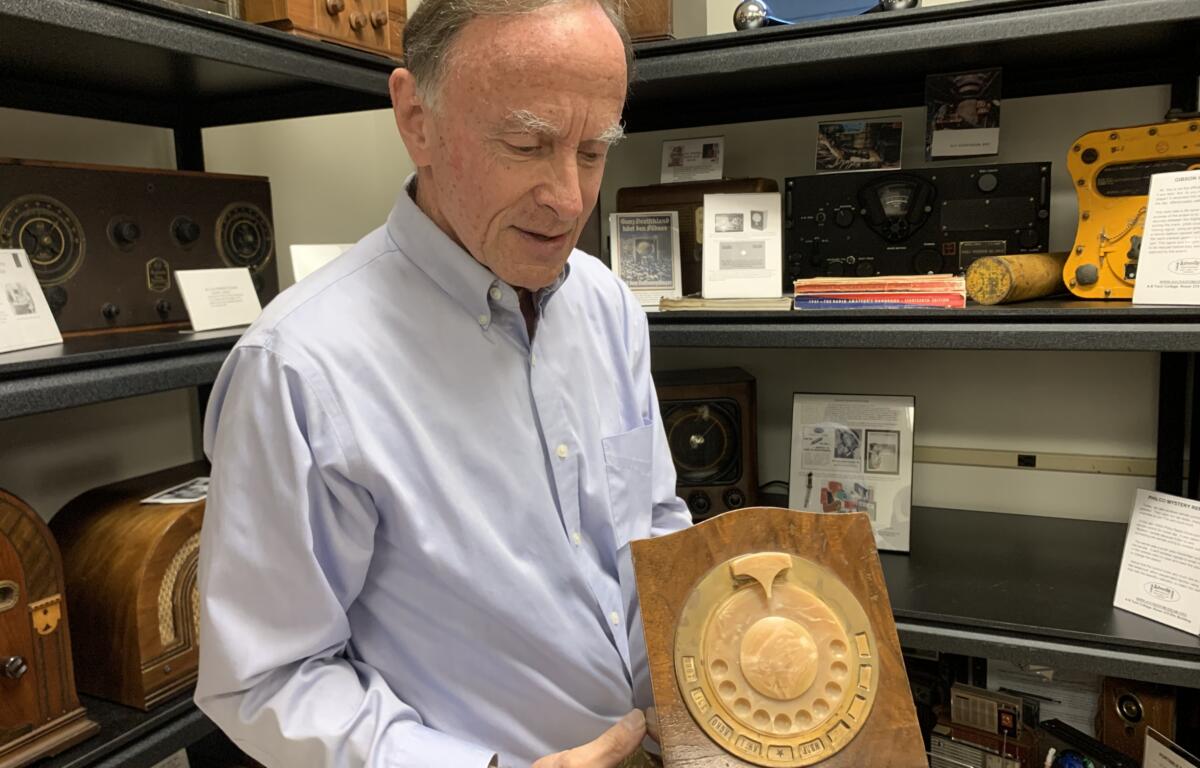ASHEVILLE, N.C. (828newsNOW) — Asheville Radio Museum is touted by its volunteer staff as “one of the best-kept secrets in Asheville.” The sounds and sights of the palace of the vintage animate audiences of all ages with a healthy blend of learning and novelty at an unbeatable price: free.
Three weeks ago, the museum moved from a 350-square-foot oversized closet to a 1050-square-foot classroom on the third floor of the Elm Building on the campus of Asheville-Buncombe Technical Community College. Audibly and visually, the new space offers more educational opportunities for locals and tourists, alike.
“Most people don’t realize how important radio is in our lives today,” said curator Stuart Smolkin, who has been volunteering with Asheville Radio Museum for five years.

Every day, we rely on radio waves for our modern sensibilities, whether it be Bluetooth, Wi-Fi or car key fobs.
Asheville Radio Museum proudly displays relics from all eras in the radio revolution, from the telegraph to the television.
“We would not have a lot of these modern conveniences we have today” without the discovery of radio waves, Smolkin explained.
Smolkin’s vision for the museum is to “amaze, fascinate and educate” attendees about the frequencies flowing all around them.

Tour guides at the museum “try to make it interesting with the stories we tell,” Smolkin said.
In many ways, the radios, phonographs, televisions and a jukebox on display are props for the histories Smolkin and the tour guides like to tell.
Smolkin outlined Asheville’s affair with the airwaves:
- In 1927, the Asheville Chamber of Commerce raised $38,000 to set up a radio station, nearly $700,000 in 2024 dollars. “Asheville took great pride in that they were big enough to have their own radio station,” Smolkin said. The station, he said, “could be heard in all 48 [contiguous] states” because the broadcast antenna was placed atop the Flatiron building.
- By the 1930s, the Asheville Police Department was abandoning its call boxes scattered around the city in favor of car radios, which at the time took up the entire trunk space. The museum has one on display.
- From the 1950s to 1970s, Hammerlund operated a manufacturing facility in Mars Hill that made AM broadcast radio kits. Several of these locally made radios are on display in the museum.
Today, about 40 stations broadcast out of the Asheville area, with as many as 70 stations within listening distance.
Asheville Media Group, the parent company of 828newsNOW, operates seven of the local stations, including Asheville’s first Spanish-language radio station, 97.3 La Pantera.
Smolkin became interested in amateur radio as a Boy Scout while taking a Radio Merit Badge class and has remained a radio enthusiast.
But life as he knew it was changed by a storm.
“I was flooded out by Hurricane Katrina,” Smolkin explained. “I decided to move up to the mountains.”
Hurricane Katrina destroyed his radio collection.
Smolkin moved to Asheville to “stay high and dry.”
He joined the museum staff in 2019 under one condition: the museum be reorganized to be visitor-friendly. That is how he became the curator.
“For such a small museum we punch above our weight,” Smolkin boasted.

The museum hosts about 150 guests per year. With the new location, Smolkin hopes the attendance can grow just as the space did.
“Our biggest challenge is getting people to visit and leaving a good review,” Smolkin said.
Beyond tours, Smolkin said there are “three guys that are incredibly good at restoring radios.” The volunteers are “willing to help people get their old radios working.”
“We always welcome donations,” Smolkin said, but “we can’t show everything you give us.”
The museum is funded by restoring donated radios and selling the ones there isn’t room to showcase.
Asheville Radio Museum at 27 Tech Drive in Asheville is open to the public 1-3 p.m. every Saturday. Groups may request other times for tours.
CLICK HERE to learn more about Asheville Radio Museum, schedule a tour or donate a radio.










